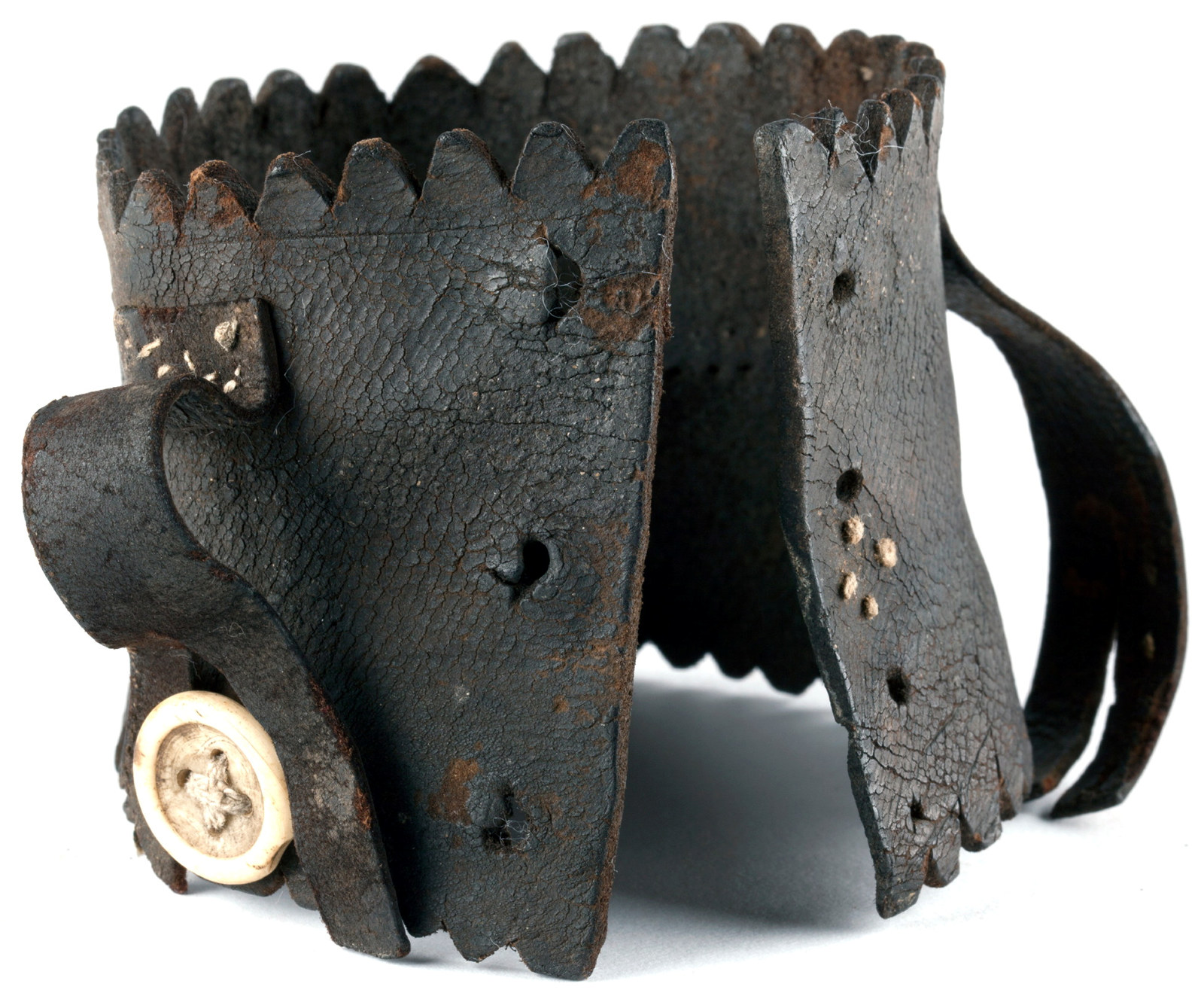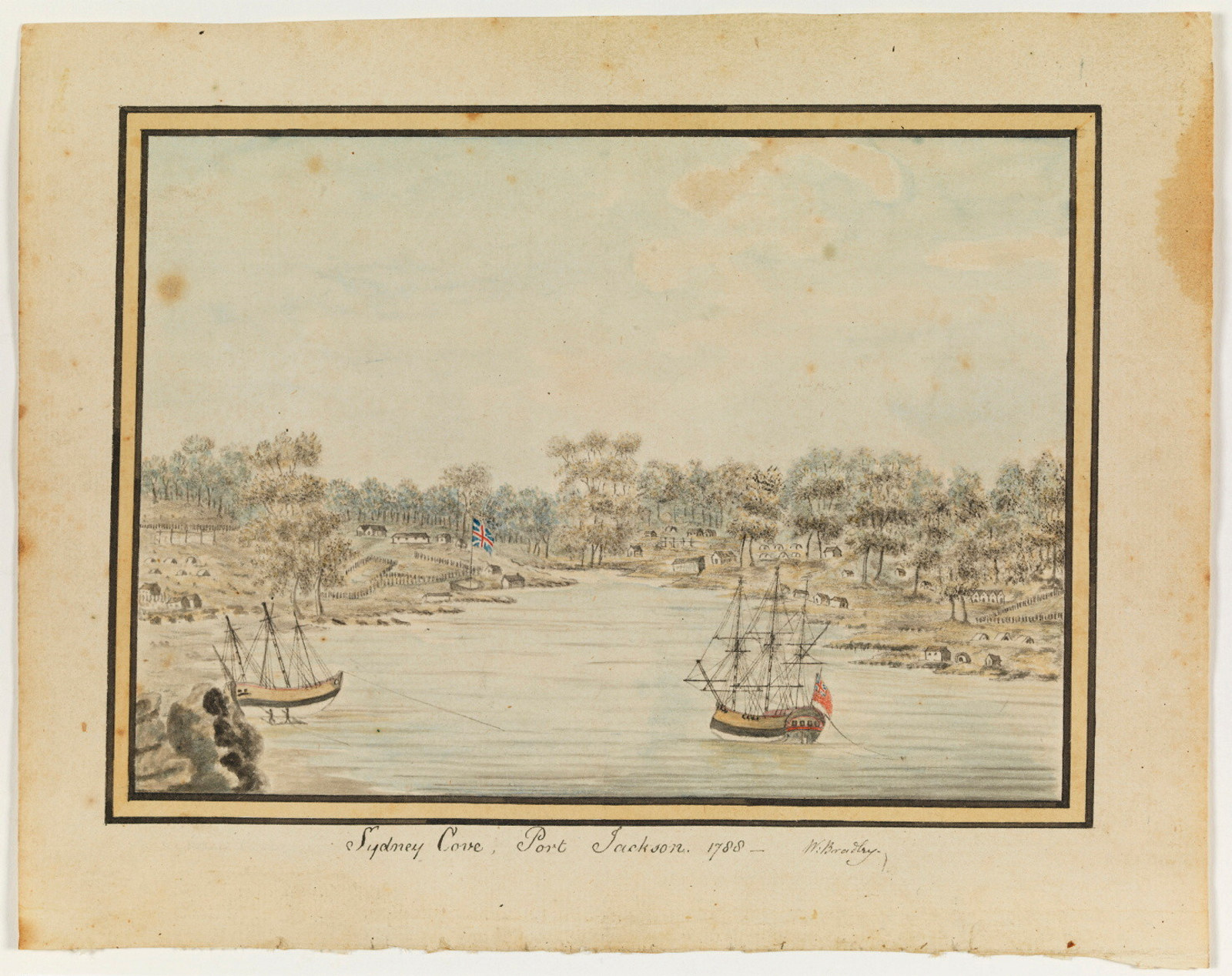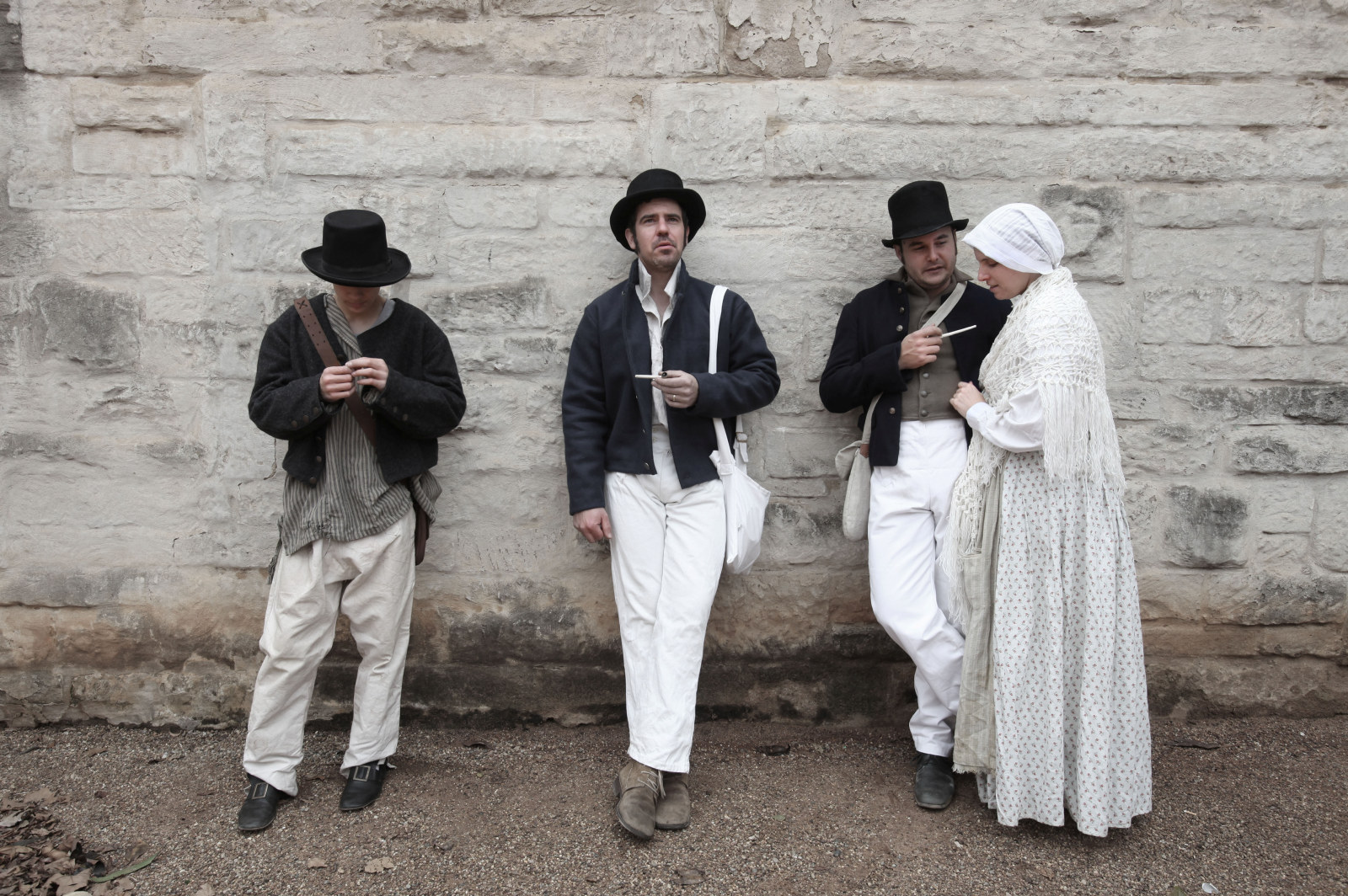Lumberyard
Established about 1800, the first government lumberyard in Sydney, at the corner of George and Bridge streets, was the centre of convict industry.
Convict carpenters, wheelwrights, tailors and shoemakers made equipment and clothing for the colony. Blacksmiths forged leg-irons, chains, and many of the tools used by other mechanics, such as masons cutting stone around Sydney, and timbergetters felling trees, sawing and splitting timber around the bush.
This content was compiled for the Convict Sydney website from existing information such as SLM exhibition text and other researched material © Sydney Living Museums, 2017.
Published on
Convicts

Convict Sydney
Leg Iron Guard
A stunning example of an improvised handicraft, this leather ankle guard or ‘gaiter’ was made to protect a convict’s ankle from leg irons

Why were convicts transported to Australia?
Until 1782, English convicts were transported to America, however that all changed after 1783

Convict Sydney
1844 - Day in the life of a convict
Fraying at the edges, these were the Barracks’ darkest days with only the worst convicts remaining

Convict Sydney
1801 - Day in the life of a convict
In the young colony, there was no prisoner’s barrack - the bush and sea were the walls of the convicts’ prison